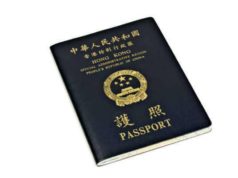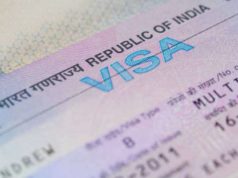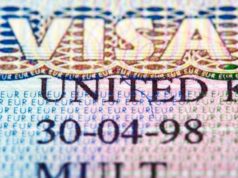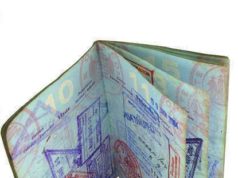
Introduction
Australia has always been one of the most popular destinations for tourists, students, and professionals. Whether it’s the stunning natural beauty or the warm and friendly locals, there is something about Australia that draws people in. However, before embarking on any journey to Australia, it is important to have a clear understanding of the visa requirements. In this article, we will discuss the various visa options available for traveling to Australia and what you need to know about each one.
Types of Visas
Visitor visa
The visitor visa is the most commonly obtained visa for traveling to Australia. It allows tourists to stay in the country for up to 12 months, depending on the purpose of the visit. This visa is suitable for people looking to visit friends or family, go sightseeing, or engage in other activities that do not involve work.
There are two types of visitor visas available: the subclass 600 and the eVisitor visa. The subclass 600 is granted for stays of up to 12 months and is available to people from all countries except those on the visa waiver program. The eVisitor visa is available to citizens of European Union countries, Switzerland, and several other countries. It is granted for stays of up to three months.
Working Holiday visa
The working holiday visa is an excellent option for young adults looking to travel and work in Australia. This visa is available to people between the ages of 18 and 30 and allows them to work and study in Australia for up to 12 months. It is a great way to gain work experience, meet new people and experience the Australian way of life.
To obtain a working holiday visa, applicants must have a valid passport from an eligible country, meet health and character requirements, and not have any dependent children. Additionally, they must be able to demonstrate that they have sufficient funds to support themselves during their stay in Australia.
Student visa
The student visa is an important visa type for international students looking to study in Australia. This visa allows students to enroll in a course of study and stay in Australia for the duration of their course. It is an excellent way to gain an education in a different country and experience Australian culture.
To obtain a student visa, applicants must have received a letter of offer from an Australian education provider, have sufficient funds to support themselves during their stay, and meet health and character requirements. Additionally, students must be enrolled in a course of study that is registered with the Commonwealth Register of Institutions and Courses for Overseas Students (CRICOS).
Skilled visa
The skilled visa is a popular option for individuals looking to immigrate to Australia. This visa is designed for people who have skills or qualifications that are in demand in Australia and want to live and work in the country permanently. It is a complicated visa process and requires a significant amount of preparation and documentation.
To obtain a skilled visa, applicants must have a skilled occupation that is on the Skilled Occupation List, meet age, English language, and skill requirements, and have their skills assessed by an Australian assessing authority. Additionally, skilled migrants may be eligible for state or territory nomination, which can provide additional points for the visa application.
Family visa
The family visa is designed for people who have family members in Australia and want to join them. This visa is available to spouses or partners, dependent children, parents, and other family members. It is a complex visa process that requires careful preparation and documentation.
To obtain a family visa, applicants must meet age, health, and character requirements, demonstrate their relationship, and show that they have sufficient funds to support themselves during their stay in Australia.
ETA and eVisitor visas
ETA and eVisitor visas are electronic visas that allow tourists to stay in Australia for up to three months. The ETA is available to citizens of certain countries, including the United States and Canada, while the eVisitor visa is available to citizens of the European Union.
To obtain an ETA or eVisitor visa, applicants must apply online and pay a fee. The visa is then linked to the traveler’s passport electronically, and no physical documents are required.
Conclusion
In conclusion, Australia offers a wide range of visa options for people looking to travel, work, study, or immigrate to the country. While the process of obtaining a visa can be complicated, it is important to understand the requirements for each visa type before beginning the application process. By doing so, applicants can ensure that they meet the necessary criteria and increase their chances of obtaining a visa. With proper planning and documentation, anyone can enjoy the incredible sights and sounds that Australia has to offer.
Australia is one of a handful of English-speaking countries of which its residents not only seem to have a propensity for travel, but in fact, are even encouraged by their government to do so. A great example of this is the working holiday visa program, in which young adults between the ages of 18 and 30 may have the opportunity to travel and work under a mission of cultural exchange, contingent on a working relationship between those individuals’ countries of origin and a second country that has consented to such a fraternal relationship. Like Canada, New Zealand and the United Kingdom, Australia maintains working holiday binaries with a number of countries, and as such, the Australian presence can be felt worldwide.
As much as Australia sends its citizens beyond its borders, though, it just as easily accepts them. Like most nations, Australia encourages tourism, and with so many different geographical wonders and cultural enclaves enmeshed in the landscape, the continent surely has the amenities to solicit itself to the world’s patrons.
Given the fact it is on a completely different hemisphere than that of Australia, the United States of America is not immune to the charms of “the Land Down Under”; especially for those who suffer cold winters, the opportunity to travel to much warmer conditions is an opportunity that they will want to have in their back pocket. As a result, an Australian visa is one of the most sought after forms of documentation in American travel.
While vacation is certain a most popular justification for traveling between the United States and Australia, visa status may be petitioned for for a number of reasons. Below is a partial list of possible ways to get an Australian visa that coincides with ways in which the Australian visa is distinct from others, notably that of American immigration law:
1. Terminology – Between American English and British English, there are subtle differences not only in the way words are enunciated, but how they are perceived. A “holiday” in the American sense is definitely not the same thing as a “holiday” as interpreted in the United Kingdom or Australia. Visa application between the U.S. and Australia, similarly, is perhaps more easily understood through Australian terms.
The Department of Citizenship and Immigration groups the travel of family members and residents returning to the country under the “migrant” Australian visa. In addition, for some workers coming to Australia, visa documentation under the “migrant” banner is visible in the General Skilled Migration program. In this way, migrant is being used with greater specificity than normal international producers might.
2. Refugee status – In the United states, a grant of asylum or refugee status does not involve the acquisition of some special variety of refugee visa, to show mercy to those in immediately danger. Meanwhile, in Australia, visa routes are available for the refugee. Prior to a grant of permanent residency
3. The working holiday visa program – As mentioned, members of some countries (restricted by age and financial viability, among other things) that have entered into friendly agreements with foreign governments may apply for an Australian visa through the working holiday visa. program. For Americans looking to travel under these terms, any special considerations should be reviewed by a consular official working on behalf of the Department of State in Australia. Visa documentation of this sort is more readily available for Australians, as more agreement countries are available for their consideration.


























